In a mineral processing plant, operating at the rate of 400,000t/d , this is equivalent to about 28t of solid per minute, requiting up to 75 m3 /min of water. It is therefore important to operate with the minimum upward or horizontal movement and with the maximum practicable pulp density in all of those stages subsequent to the addition of water to the system. The basic philosophy requires maximum use of gravity and continuous movement over the shortest possible distances between processing units.
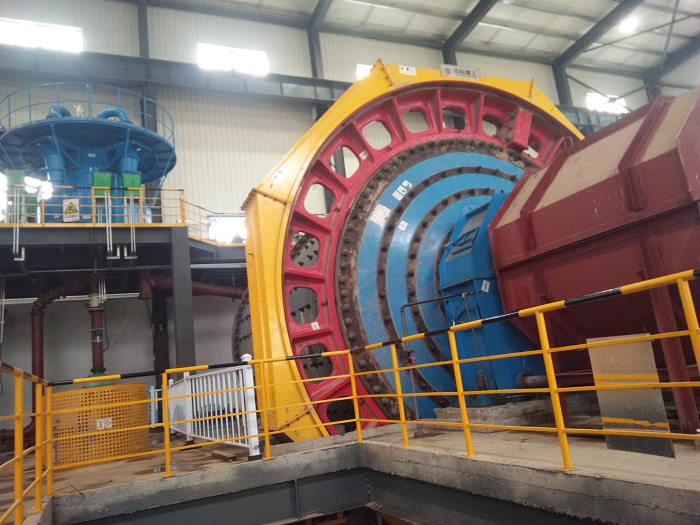
Dry ore can be moved through chutes, provided they are of sufficient slope to allow easy sliding, and sharp turns are avoided. Clean solids slide easily on a 15-25° steel-faced slope, but for most ores, a 45-55°working slope is used. The ore may be difficult to control if the slope is too steep.
The belt conveyor is the most widely used method of handling loose bulk materials. Belts now in use are with capacities up to 20,000t/h and single flight lengths exceeding 15,000m, with feasible speeds of up to 10 m/s.
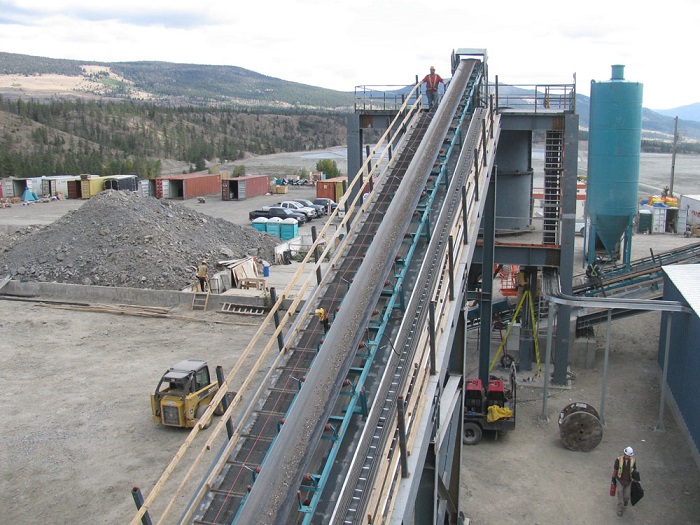
The standard rubber conveyor belt has a foundation of sufficient strength to withstand the driving tension and loading strains. This foundation, which may be of cotton, nylon, or steel cord, is bound together with a rubber matrix and completely covered with a layer of vulcanised rubber.
The carrying capacity of the belt is increased by passing it over troughing idlers. These are support rollers set normal to the travel of the belt and inclined upward from the centre so as to raise the edges and give it a trough-like profile. There may be three or five in a set and they will be rubbercoated under a loading point, so as to reduce the wear and damage from impact. Spacing along the belt is at the maximum interval which avoids excessive sag. The return belt is supported by horizontal straight idlers which overlap the belt by a few inches at each side.
To induce motion without slipping requires good contact between the belt and drive pulley. This may not be possible with a single 180 ~ turn over a pulley and some form of "snubbed pulley" drive or "tandem" drive arrangement may be more effective (Figure 1).
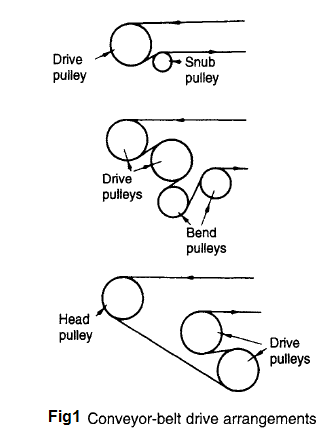
The belt system must incorporate some form of tensioning device to adjust the belt for stretch and shrinkage and thus prevent undue sag between idlers, and slip at the drive pulley. In most mills, gravity-operated arrangements are used which adjust the tension continuously (Figure 2).Hydraulics have also been used extensively, and when more refined belt-tension control is required, especially in starting and stopping long conveyors, load-cell-controlled electrical tensioning devices are used.
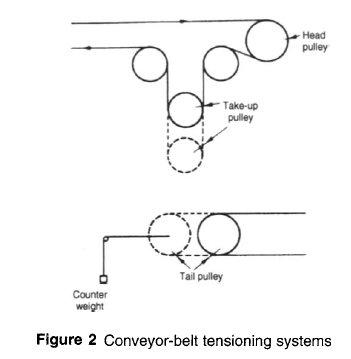
The reliability of belt systems has been enhanced by advances in control technology, making possible a high degree of fail-safe automation. A series of belts should incorporate an interlock system such that failure of any particular belt will automatically stop preceding belts. Interlock with devices being fed by the belt is important for the same reasons. It should not be possible to shut down any machine in the system without arresting the feed to the machine at the same time and, similarly, motor failure should lead to the automatic tripping of all preceding belts and machines. Sophisticated electrical, pneumatic and hydraulic circuits have been widely employed to replace all but a few manual operations.
Several methods can be used to minimise loading shock on the belt. A typical arrangement is shown in Figure 3 where the fines are screened on to the belt first and provide a cushion for the larger pieces of rock.
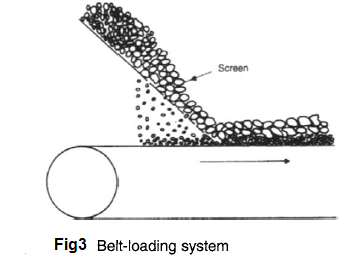
Feed chutes must be designed to deliver the bulk of the material to the centre of the belt and at a velocity close to that of the belt. Ideally it should be the same, but in practice this condition is seldom obtained, particularly with wet sand or sticky materials. Where conditions will allow, the angle of the chute should be as great as possible, thereby allowing it to be gradually placed at lesser angles to the belt until the correct speed of flow is obtained. The material, particularly if it is heavy, or lumpy, should never be allowed to strike the belt vertically. Baffles in transfer chutes, to guide material flow, are now often remotely controlled by hydraulic cylinders. The conveyor may discharge at the head pulley, or the load may be removed before the head pulley is reached. The most satisfactory device for achieving this is a tripper. This is an arrangement of pulleys by which the belt is raised and doubled back so as to give it a localised discharge point. It is usually mounted on wheels, running on tracks, so that the load can be delivered at several points, over a long bin or into several bins. The discharge chute on the tripper can deliver to one or both sides of the belt. The tripper may be moved by hand, by head and tail ropes from a reversible hoisting drum, or by a motor. It may be automatic, moving backwards and forwards under power from the belt drive.
Shuttle belts are reversible self-contained conveyor units mounted on carriages, which permit them to be moved lengthwise to discharge to either side of the feed point. The range of distribution is approximately twice the length of the conveyor.
They are often preferred to trippers for permanent storage systems because they require less head room and, being without reverse bends, are much easier on the belt.